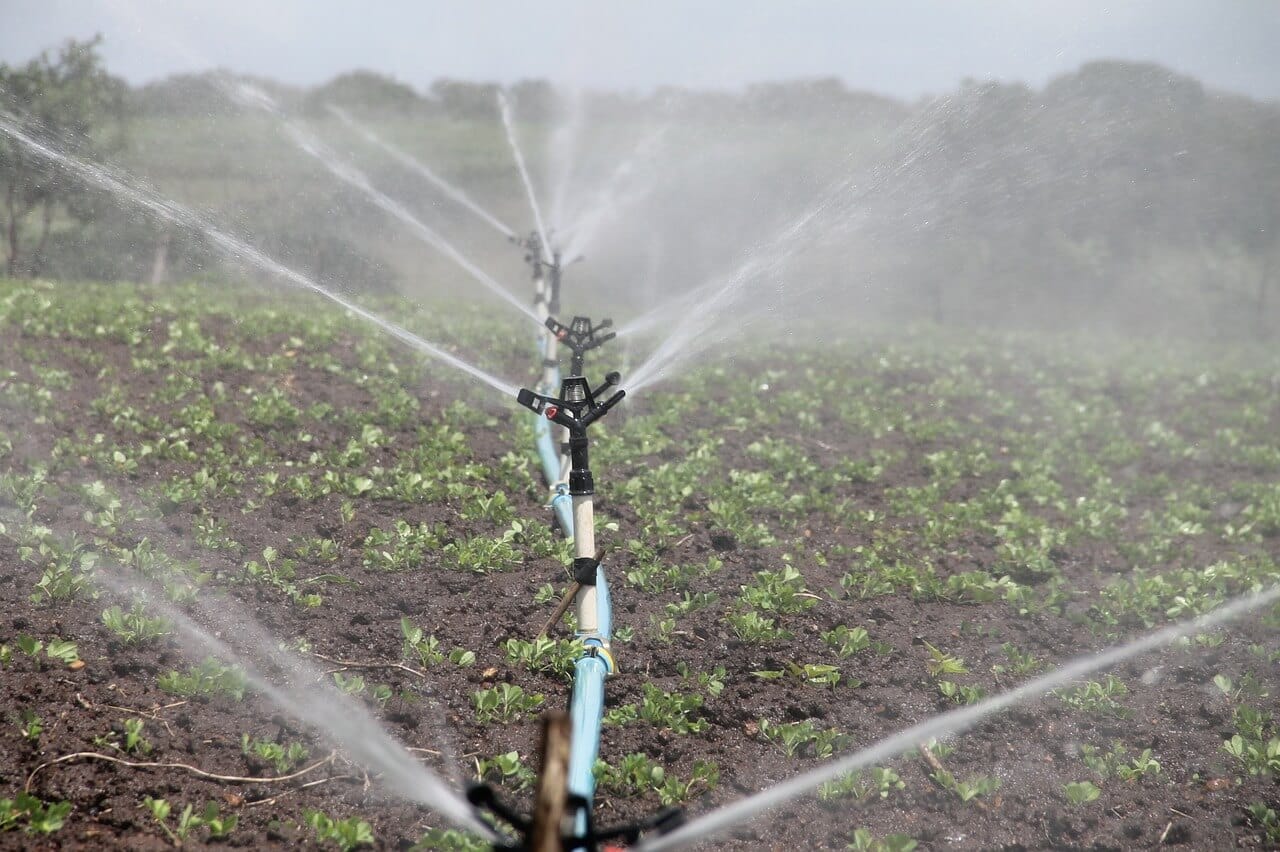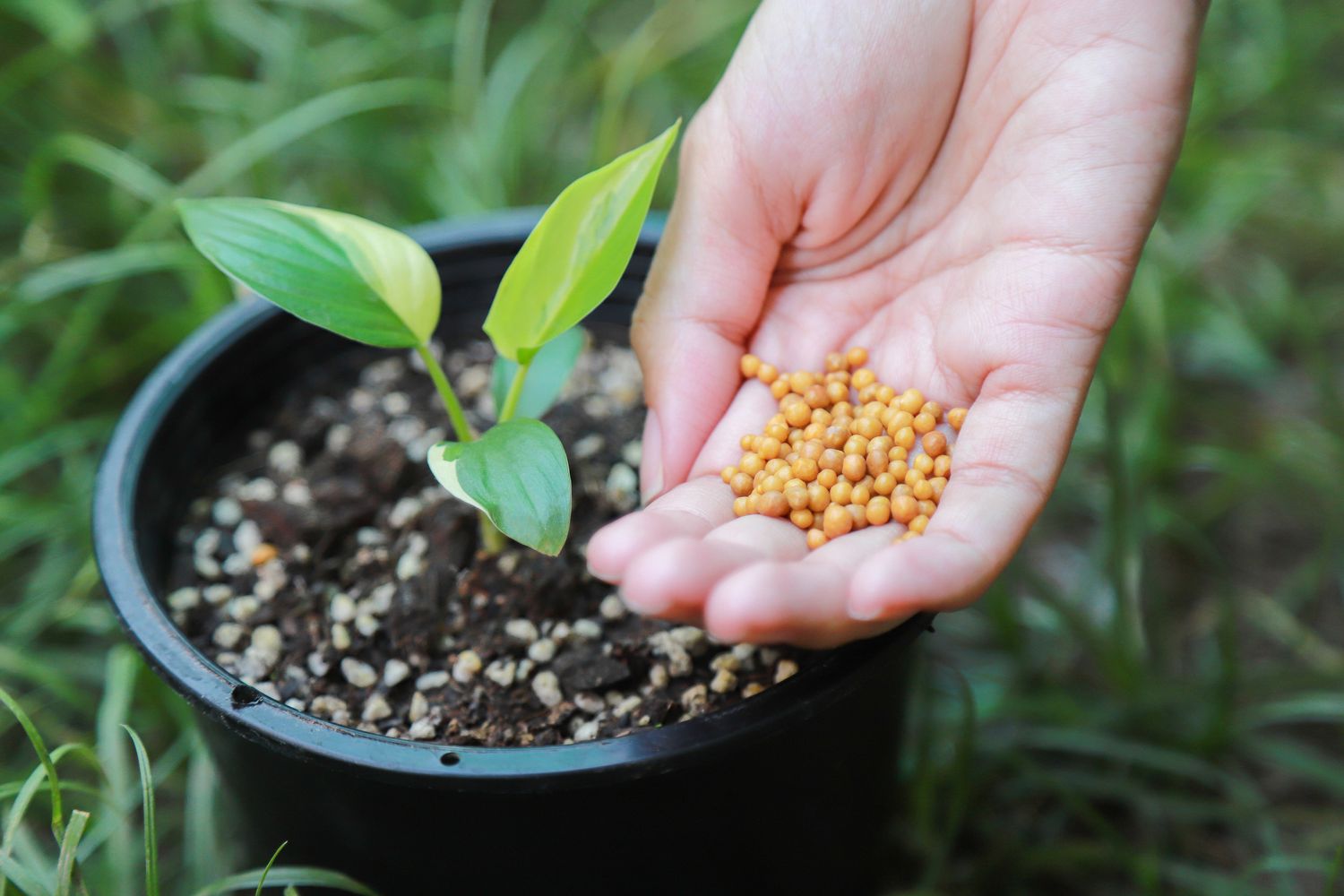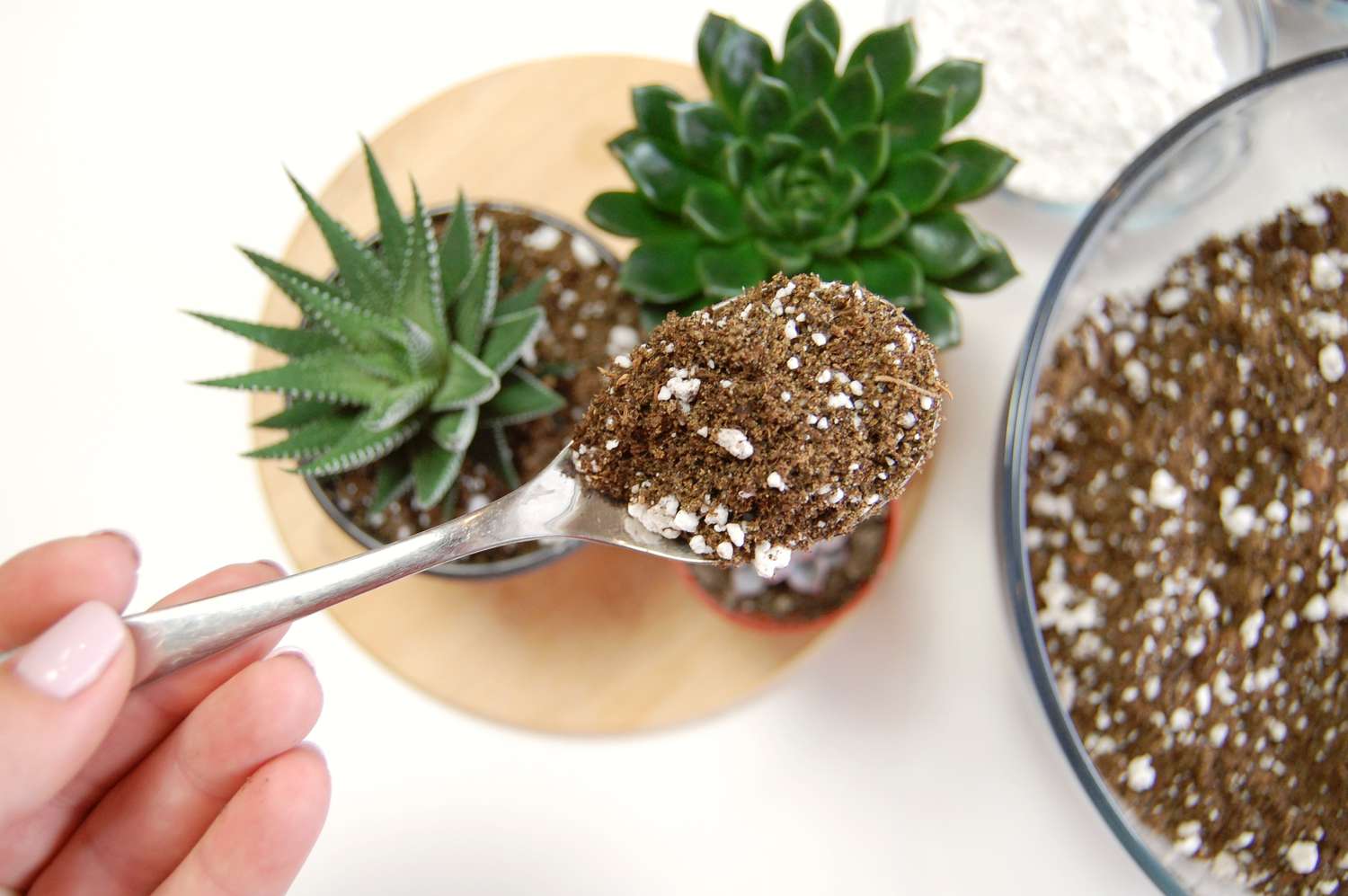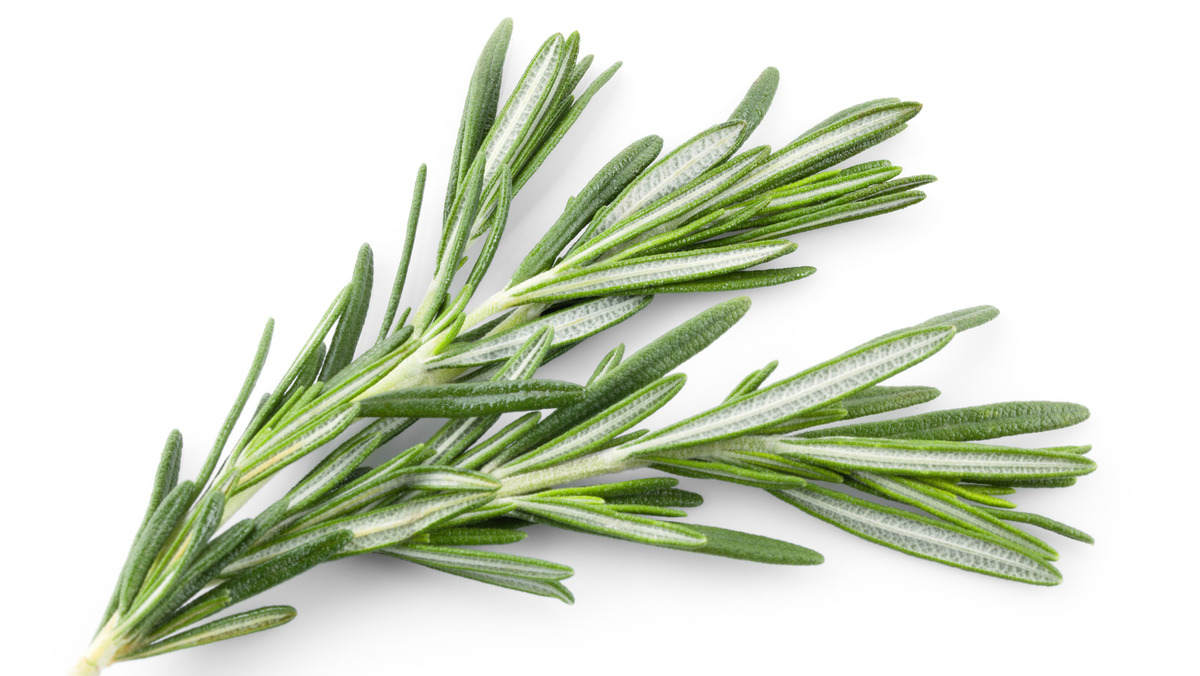Home>Gardening Basics>Understanding Soil>What Type Of Soil For Succulents


Understanding Soil
What Type Of Soil For Succulents
Modified: February 10, 2024
Learn the importance of understanding soil for succulents and discover the best type of soil to ensure their growth and health.
(Many of the links in this article redirect to a specific reviewed product. Your purchase of these products through affiliate links helps to generate commission for Chicagolandgardening.com, at no extra cost. Learn more)
Table of Contents
Introduction
Succulents have gained immense popularity in recent years. Their unique and charming appearance, combined with their low maintenance requirements, make them a favorite among both seasoned gardeners and beginners. However, one aspect that is often overlooked when it comes to succulent care is the importance of soil.
Soil plays a vital role in the overall health and well-being of succulents. The right type of soil can provide the necessary nutrients, proper drainage, and moisture retention that these plants need to thrive. On the other hand, using the wrong soil can lead to root rot, nutrient deficiencies, and even the death of your precious succulents.
Understanding the characteristics of ideal soil for succulents and choosing the right type of soil are crucial in ensuring the success of your succulent garden. In this article, we will explore the different types of soil that are suitable for succulents, as well as some tips for preparing the soil for optimal growth.
Whether you are a seasoned succulent enthusiast or just embarking on your succulent journey, this article will provide you with valuable insights and practical tips to help you create the perfect soil conditions for your succulents.
Why Soil is Important for Succulents
Soil serves as the foundation for any plant’s growth, and succulents are no exception. Succulents have unique water storage capabilities in their leaves and stems, allowing them to thrive in arid conditions. However, their specialized adaptation requires specific soil conditions to ensure their survival and optimal growth.
One of the primary reasons why soil is essential for succulents is because it affects their water requirements. Succulents are highly susceptible to root rot, which occurs when water sits around the roots for too long. Therefore, the soil should have excellent drainage properties to prevent excess water from pooling around the roots.
Additionally, succulents need a well-aerated soil environment. Oxygen is vital for root respiration and nutrient absorption. If the soil is compacted or waterlogged, it can suffocate the roots and hinder their ability to take up essential nutrients from the soil. A well-draining soil ensures that there is proper oxygen circulation, enhancing the overall health of the succulent.
The soil also acts as a reservoir for nutrients. While succulents are generally resilient plants, they still require a balanced supply of nutrients to support their growth and development. A nutrient-deficient soil can lead to stunted growth, pale leaves, and overall poor health of the succulent. Therefore, it is crucial to choose a soil type that is rich in essential nutrients or amend the soil with organic matter and fertilizers.
Lastly, the texture and structure of the soil directly affect how well the roots can anchor themselves and support the succulent. Sandy or loose soils provide excellent root penetration and expansion, allowing the succulent to establish a strong root system. On the other hand, overly compacted or heavy clay soils can restrict root growth and hinder overall plant stability.
Understanding the importance of soil for succulents is key to providing the optimal conditions for their growth. By selecting the right soil type and ensuring proper drainage, aeration, and nutrient content, you can create an environment where your succulents can thrive and flourish.
Characteristics of Ideal Soil for Succulents
The ideal soil for succulents should have specific characteristics to promote healthy growth and prevent issues such as root rot. Here are some key qualities to look for in succulent soil:
- Well-draining: Succulents are native to arid regions and have adapted to survive in low-water environments. Thus, it is crucial to use a well-draining soil that allows excess water to escape quickly. This prevents water from sitting around the roots and causing root rot.
- Aeration: Good soil for succulents should be well-aerated, allowing oxygen to reach the roots. This is essential for respiration and nutrient uptake. Avoid compacted or heavy soils that can suffocate the roots.
- Porosity: Succulent soil should be porous to enhance water infiltration and prevent waterlogging. A mix with coarse materials such as sand or perlite helps achieve this porosity.
- Low organic matter: While organic matter is beneficial for many plants, succulents prefer a soil mix with low organic matter content. Excessive organic matter can retain moisture for longer periods, increasing the risk of root rot. Use well-draining soil mixes specifically formulated for succulents.
- pH balance: Succulents generally prefer slightly acidic to neutral pH levels. A pH range between 6.0 to 7.0 is ideal. Test the soil pH and adjust if necessary to provide the optimal growing conditions for your succulents.
- Nutrient content: Succulents have unique nutritional needs, requiring a balanced mix of nutrients. Look for a soil mix that contains essential macronutrients (nitrogen, phosphorus, potassium) and micronutrients (iron, calcium, magnesium), or amend the soil with a slow-release fertilizer specific to succulents.
It is essential to note that succulent soil requirements may vary depending on the specific type of succulent you are growing. Some succulents, such as cacti, have even stricter soil preferences, requiring an even higher proportion of inorganic materials.
By ensuring that your succulent soil meets these ideal characteristics, you provide a solid foundation for your succulents to thrive. Remember that a well-draining and well-aerated soil is crucial for preventing root rot and maintaining the overall health of your succulents.
Types of Soil Suitable for Succulents
There are several types of soil that are well-suited for growing succulents. Each type has its own unique qualities and can be used depending on the specific needs of your succulents. Here are some of the most common types of soil suitable for succulents:
- Sandy Soil: Sandy soil is known for its excellent drainage properties. It consists of larger particles that allow water to flow freely, preventing waterlogging and the risk of root rot. While sandy soil does not retain moisture for long periods, it is ideal for succulents that prefer drier conditions.
- Well-Draining Potting Soil: Well-draining potting soil specifically formulated for succulents is readily available in garden centers and nurseries. These mixes often contain a combination of sand, perlite, or vermiculite to improve drainage and aeration. They typically have a low organic matter content to prevent excessive moisture retention.
- Cactus Mix: Cactus mix is a type of soil specifically designed for succulents and cacti. It is typically a blend of sand, peat moss, perlite, and other ingredients that promote drainage and aeration. Cactus mix provides a well-balanced environment for succulents, preventing the risk of waterlogged roots.
- DIY Succulent Soil Mixes: Many succulent enthusiasts prefer to create their own soil mixes to suit their preferences and the specific needs of their succulents. DIY soil mixes often consist of a combination of materials like potting soil, coarse sand, perlite, and pumice to achieve the desired level of drainage and aeration.
When choosing the right type of soil for your succulents, consider factors such as the specific succulent species, climate, and your watering habits. Succulents that prefer dry conditions may benefit from a sandier soil mix, while succulents that require more moisture may do well with a well-draining potting soil that retains some moisture.
Remember to always select soil mixes that have the key characteristics mentioned earlier, including good drainage, aeration, and a balanced nutrient content. These types of soil will provide a stable and suitable environment for your succulents to thrive and prevent common issues such as root rot.
Sandy Soil
Sandy soil is an excellent choice for succulents that prefer drier conditions and excellent drainage. It is characterized by its loose texture and larger particles, allowing water to flow through freely. This type of soil is ideal for succulents as it helps prevent waterlogging and the risk of root rot, which can be detrimental to their health.
One of the benefits of using sandy soil for succulents is its ability to dry out quickly. Succulents have adapted to store water in their leaves and stems to survive in arid environments. Sandy soil aids in maintaining the perfect balance of moisture, preventing succulents from sitting in excessive moisture for prolonged periods, which can lead to root rot.
Sandy soil also provides the necessary aeration for the root system of succulents. The larger particles allow for better air circulation in the soil, promoting healthy root respiration and preventing issues associated with poorly aerated soil, such as root suffocation or growth inhibition.
It is important to note that sandy soil alone may lack the necessary nutrients for succulents. Adding organic matter or incorporating slow-release fertilizers can help supplement the soil with essential nutrients. This will ensure that your succulents receive the necessary nutrients for their growth and overall well-being.
When using sandy soil for succulents, it is essential to monitor the moisture levels regularly. The quick-draining nature of sandy soil means that it may require more frequent watering to prevent the soil from drying out completely. It is also advisable to water succulents using the “soak and dry” method, thoroughly saturating the soil and allowing it to dry completely before watering again.
Overall, sandy soil is an excellent choice for succulents that prefer drier conditions and good drainage. It supports the unique water storage capabilities of succulents while providing an environment that promotes healthy root growth. When combined with proper watering and nutrient supplementation, sandy soil can help your succulents thrive and display their vibrant and unique beauty.
Well-Draining Potting Soil
Well-draining potting soil specifically formulated for succulents is a popular and convenient choice for many succulent enthusiasts. This type of soil is carefully crafted to provide the ideal growing conditions for succulents, with a focus on excellent drainage and aeration.
Well-draining potting soil for succulents typically consists of a blend of organic materials, such as peat moss or coconut coir, and inorganic materials, such as perlite or pumice. The organic materials provide some moisture retention, while the inorganic materials help improve drainage and prevent waterlogging.
This type of soil is designed to strike a balance between retaining enough moisture for the succulent to thrive and preventing excess water from pooling around the roots. With proper watering practices, well-draining potting soil can help prevent the risk of root rot and promote a healthy root system.
Well-draining potting soil also aids in providing proper aeration to the succulent’s root system. The mixture of organic and inorganic materials creates air pockets within the soil, allowing for the easy exchange of oxygen and carbon dioxide. This oxygenation is crucial for root respiration and nutrient absorption.
Using well-draining potting soil can be advantageous for succulents that require slightly more moisture or for succulent species that do not tolerate completely dry conditions. The organic components help retain some moisture, reducing the frequency of watering needed while still ensuring adequate drainage.
When using well-draining potting soil for succulents, it is important to avoid overwatering. While the soil mix allows for adequate drainage, it is essential to allow the soil to dry out between waterings to prevent moisture-related issues. Succulents are adapted to survive in arid environments and prefer periods of dryness.
It is worth noting that well-draining potting soil may require some supplementation of nutrients over time, as organic materials eventually break down and lose their nutrient content. Adding slow-release fertilizers or periodically amending the soil with organic matter can help provide the necessary nutrients for your succulents.
Well-draining potting soil is a reliable choice for succulent gardening, especially for those who prefer a convenient and ready-to-use soil mix. Its balanced combination of organic and inorganic materials promotes proper drainage and aeration, creating an environment that encourages healthy succulent growth and prevents issues associated with excessive moisture.
Cactus Mix
Cactus mix is a specialized type of soil that is specifically formulated for succulents and cacti. It is a popular choice among succulent enthusiasts due to its excellent drainage properties and ability to provide optimal conditions for succulent growth.
Cactus mix is typically a blend of various components, including sand, perlite, peat moss, and sometimes additional inorganic materials like pumice or volcanic rock. The combination of these materials creates a well-draining soil mixture that closely mimics the natural habitat of succulents.
One of the main advantages of using cactus mix for succulents is its superior ability to prevent waterlogging. The coarse texture and porous nature of the soil allow excess water to quickly drain away from the roots, minimizing the risk of root rot. This is particularly important for succulents, as they are highly susceptible to root rot if left in consistently wet conditions.
Cactus mix provides good aeration, allowing for the circulation of oxygen around the roots of the succulents. Proper air circulation is vital for root respiration and nutrient absorption. The mixture of inorganic materials in cactus mix creates air pockets that facilitate this essential process.
Another benefit of using cactus mix is its ability to deliver a well-balanced supply of nutrients. Many commercially available cactus mixes are formulated to include slow-release fertilizers specifically designed for succulents. These fertilizers provide the necessary nutrients that succulents need for healthy growth and development.
When using cactus mix, it is important to note that succulents grown in this type of soil may require more frequent watering due to its well-draining nature. It is crucial to monitor the moisture levels and water succulents thoroughly when the soil is dry, but allow it to dry out before watering again. This helps prevent the roots from sitting in overly wet conditions for extended periods.
Cactus mix is a convenient and reliable option for growing succulents, especially for those who want to ensure optimal drainage and aeration. Its specialized composition allows for proper water retention and nutrient availability while preventing issues associated with excessive moisture. Using cactus mix will help create the ideal environment for your succulents to thrive and showcase their unique beauty.
DIY Succulent Soil Mixes
Many succulent enthusiasts prefer to create their own soil mixes for their plants. DIY succulent soil mixes allow for customization based on personal preferences and the specific needs of succulents. By blending different components, you can create a soil mix that promotes excellent drainage, aeration, and nutrient availability.
When creating your own succulent soil mix, there are a few key components that are commonly used:
- Potting Soil: Start with a good-quality potting soil as the base for your mix. Look for a well-draining potting mix that does not retain excessive moisture.
- Coarse Sand: Adding coarse sand to the mix helps improve drainage and prevent waterlogging. Opt for horticultural sand or builder’s sand, as beach sand may contain salts that can harm the succulents.
- Perlite or Pumice: Perlite and pumice are lightweight and porous materials that enhance drainage and aeration in the soil mix. These components create air pockets and help prevent compacted soil. They are particularly useful for species that require high drainage.
- Organic Matter: Although succulents generally prefer lower amounts of organic matter, a small amount can be added to improve moisture retention slightly. Coconut coir or peat moss are popular choices for organic matter.
The exact proportions of each component in the DIY succulent soil mix can vary based on your preferences and the specific needs of your succulents. A general guideline is to aim for a mix with approximately 50% potting soil, 25% coarse sand, and 25% perlite or pumice. Adjust the ratios as needed to achieve the desired drainage and moisture retention.
It’s important to note that DIY succulent soil mixes require regular monitoring of moisture levels. These mixes typically dry out faster than commercial mixes, so be mindful of your watering practices to prevent the soil from completely drying out. Ensure thorough watering while allowing the soil to dry between waterings, adhering to the “soak and dry” method.
One of the benefits of creating your own soil mix is the ability to adjust and experiment to find the ideal composition for your succulents. You can modify the mix to suit different succulent species with varying moisture needs or adapt it to your local climate.
By creating your own succulent soil mix, you have the flexibility to ensure excellent drainage, aeration, and nutrient availability tailored to the specific requirements of your succulents. Experiment with different components and ratios to find the perfect DIY mix that promotes healthy growth and supports the unique beauty of your succulents.
Tips for Preparing Soil for Succulents
Proper soil preparation is essential for the successful growth of succulents. By following these tips, you can ensure that your soil provides the ideal conditions for your succulents to thrive:
- Choose the right soil ingredients: Select the appropriate soil components that promote good drainage and aeration, such as coarse sand, perlite, or pumice. Choose a well-draining potting soil as the base and adjust the ingredients based on the specific needs of your succulents.
- Mix inorganic and organic materials: Blend both inorganic materials like sand or perlite and organic materials like coconut coir or peat moss to create a well-balanced soil mix. Organic materials provide some moisture retention, while inorganic materials enhance drainage.
- Ensure proper ratios: Aim for a well-balanced ratio of soil components. A common guideline is to have approximately 50% potting soil, 25% coarse sand, and 25% perlite or pumice. Adjust the ratios as needed to achieve the desired drainage and moisture retention.
- Amend the soil with fertilizers: Succulents require a balanced nutrient supply. Incorporate slow-release fertilizers or organic matter into the soil to provide essential nutrients. Follow the package instructions for the appropriate dosage and frequency of application.
- Pre-sift the soil: To ensure a uniform texture and remove any clumps or debris, pre-sift the soil mix before use. This helps create a consistent texture and enhances the overall quality of the soil.
- Monitor moisture levels: Regularly check the moisture levels of the soil to prevent over or under-watering. Succulents prefer slightly dry conditions, so allow the soil to dry out between waterings. Stick your finger into the soil to determine the moisture level or use a moisture meter if needed.
- Provide proper drainage: Ensure that your succulent pots have drainage holes to allow excess water to escape. Using a layer of gravel or small stones at the bottom of the pot can further enhance drainage and prevent water from pooling around the roots.
- Consider the specific needs of your succulents: Different succulent species may have varied moisture and nutrient requirements. Research the specific needs of your succulents and adjust the soil preparation accordingly to create the optimal environment for their growth.
Remember, the soil is the foundation of your succulent’s health and well-being. By preparing the soil properly, you provide your succulents with the necessary conditions to thrive and display their unique beauty. Experiment with different soil compositions and ratios to find the perfect blend for your succulents, and monitor their growth to make any necessary adjustments over time.
Conclusion
Choosing the right soil for your succulents is vital for their overall health and success. The ideal soil should have excellent drainage, promote proper aeration, and provide the right balance of moisture and nutrients. Whether you opt for sandy soil, well-draining potting soil, cactus mix, or a DIY succulent soil mix, it’s important to consider the unique needs of your succulents and the specific growing conditions.
By understanding the importance of soil and its impact on succulent growth, you can create the optimal environment for your plants to thrive. Remember to monitor the moisture levels of the soil, as succulents prefer the “soak and dry” approach, allowing the soil to dry out between waterings. Additionally, consider the specific needs of your succulents, such as their preferred moisture levels, sunlight requirements, and nutrient preferences.
With the right soil, your succulents will develop strong, healthy roots and vibrant foliage. Whether you are a seasoned succulent enthusiast or just starting your succulent journey, investing time and effort into preparing the proper soil will pay off in the long run.
Take the opportunity to experiment with different soil types and additives to find the perfect mix that suits your succulents’ needs. Remember to continuously monitor and adjust your soil preparation techniques as you gain more experience and insight into the specific requirements of your succulents.
By providing your succulents with the optimal soil conditions, you are setting them up for success and creating an environment where they can thrive and bring you joy for years to come. Enjoy the process of soil preparation and watch your succulents flourish in their well-prepared, nutrient-rich, and well-draining homes.





